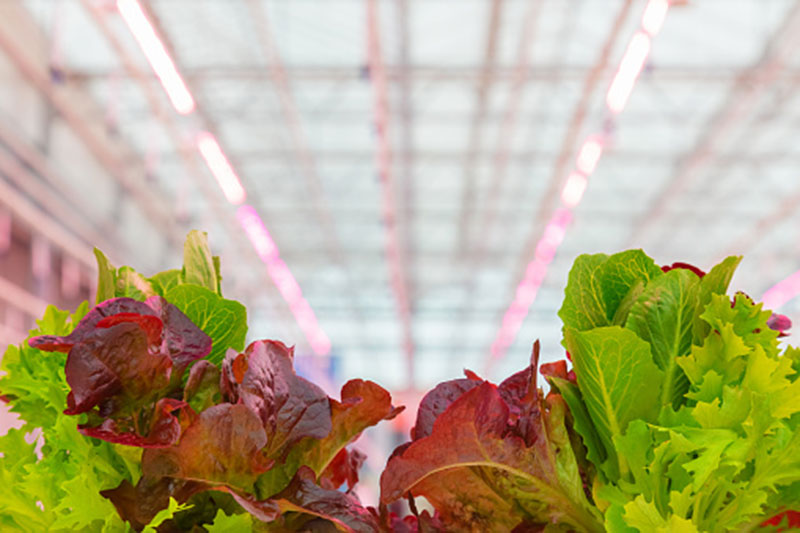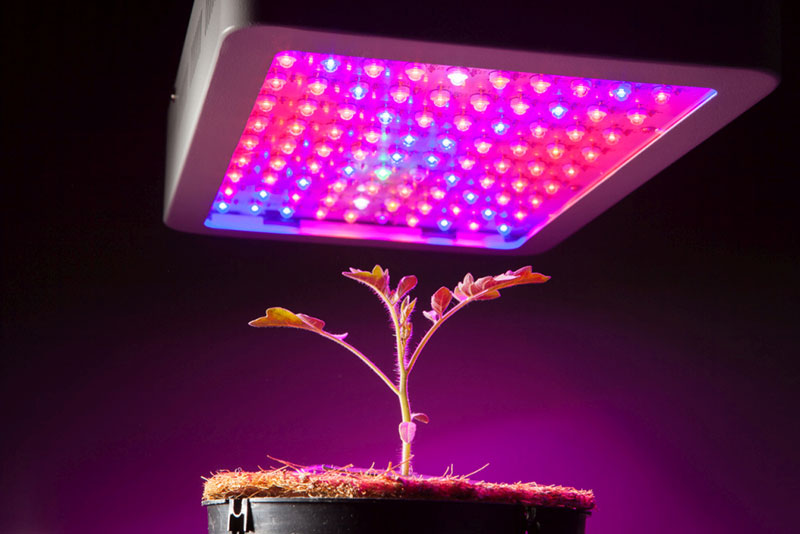Advertisement
Only in the last few decades have we moved away from lighting with the traditional incandescent light bulb. A brilliant invention it may have been, but a less energy-efficient one is difficult to find! In recent years we’ve seen a move towards halogen lighting, but perhaps more than anything, it’s the LED light that is now fast becoming the norm.
What has this to do with grow lights? And what is LED, and how does it work? This article will look at what LED stands for and what it is, why LED grow lights are important for the growing industry, and some of the benefits of using LED lights this way. Let’s begin with an overall explanation of LEDs and what they are.
LED Explained
An LED is a Light Emitting Diode. The diode is a small item that is a semiconductor. Don’t get put off; we’ll go easy on the big words! When an electric current is passed through the diode, it glows. If you want the true description, it produces light by releasing energy in the form of photons. We see this as light. LEDs are available right across the light spectrum – we’ll talk more about that later – and are used for a wide variety of purposes.
The benefits of LEDs are many. If you check out pro tech, you’ll see a market-leading supplier of LED grow lights that are among the very best in the business. Before we explain precisely why LED grow lights are the best choice, we want to talk about LEDs in general and how they are an important factor in the necessary reduction in energy wastage across the world.
How LEDs Save Energy
When it comes to energy saving in the home, the workplace, and anywhere, LED plays a massive part. How is this? Imagine your old-style light bulb, the one with a filament in it. When you switch it on, that filament creates light via an electrical arc across it. However, it also creates heat, which you will find out if you try to remove a bulb that has been lit for a couple of minutes.
Most of the energy consumed by a light bulb of this sort is heat rather than light. That may seem strange, but it’s simply the nature of the item. So, to put it simply, a light bulb needs a lot of heat to create light. This is wasted energy as we want only the light.
With an LED bulb, there is no filament. The resulting luminescence provided by the photons is almost heat-free. If we say that 90% of the energy used by an LED is light, you will see that the energy-saving potential is massive. Apply this across the world by phasing out traditional bulbs and bringing in LED, and we go some way towards recovering the energy wasted in the form of heat.
For a commercial grower, the benefit of LED is easy to see. Growers may have large areas of their premises lit to encourage the plants to grow. This results – with traditional bulbs – in the generation of heat which needs to be dissipated by way of exchangers to keep the plants at the right temperature. This requires even more energy usage. The cost saving by using LED grow lights cannot be overlooked.
But that is not the sole benefit of using LED grow lights, so let’s look more.
Why Led Grow Lights are Ideal

Plants need light to grow. That’s the general rule. But some need a different sort of light to others. What do we mean by this? It’s a bit scientific, so bear with us! Light covers a wide spectrum and comes in various forms. At one end is Ultra-Violet (UV) light. At the other is Infra-Red (IR) light. In between, there is a full range of visible light levels that cover the spectrum, this being the light we can see.
Now, LED lights can be anywhere on the spectrum within those two bookends. This means that an LED grows light can be tuned to a specific point on the spectrum, which is ideal for the plant the grower is nurturing. Take a step back to when we talked about incandescent light bulbs, the filament type: they are used in grow lamps, but we know they are far from energy-efficient, and they are variable only in the wattage produce.
So it’s clear to see that LED grow lights are instantly more attractive on two levels: they are more efficient and waste less energy, and they can be fine-tuned to the point on the spectrum the specific plant will respond to. Yet that’s not all!
Further Benefits of LED Grow Lights
We know that growing with grow lights is effective and uses less power, so what else is there that makes this the right choice of light for growing plants? A normal light bulb sends its light and heat in all directions: an LED is directional. Therefore, an LED grows light can be directed solely at the plant for great efficiency in energy use. Furthermore, by comparison in general, LED uses less energy over its lifetime than any other form of light for growing, the home, or the workplace.
Is there a downside to LED grow lights? It is difficult to find one, with the only possible negative being that an LED grows light will cost you more initially than the alternatives. Yet once you factor in the reduced energy usage and wastage and the fact that LEDs have a longer lifespan than other light forms, you will soon see how easy it is to recoup your initial investment and save money overall.
It’s recommended that growers covering a large area seriously consider investing in quality LED grow lights for better yield, lower expenses, and reduced energy wastage, so check out Pro-Tech, whom we mentioned earlier, and start your search right now.

